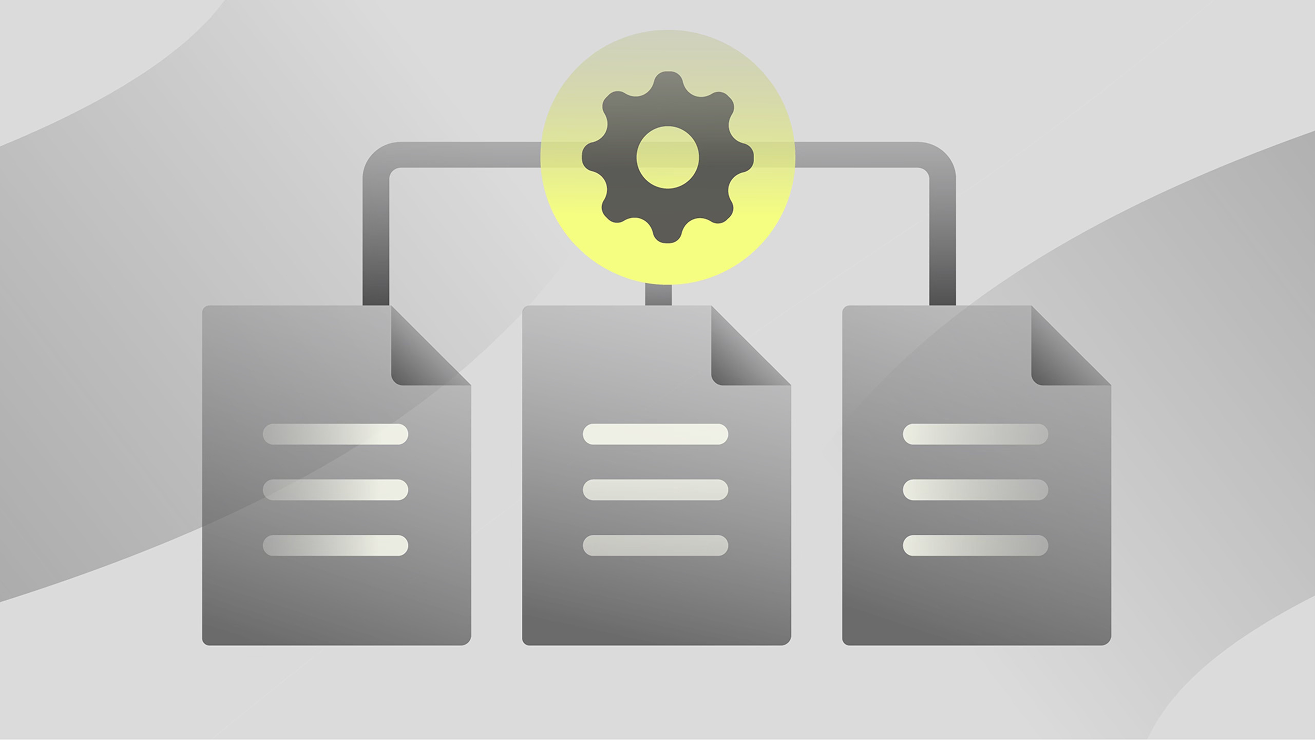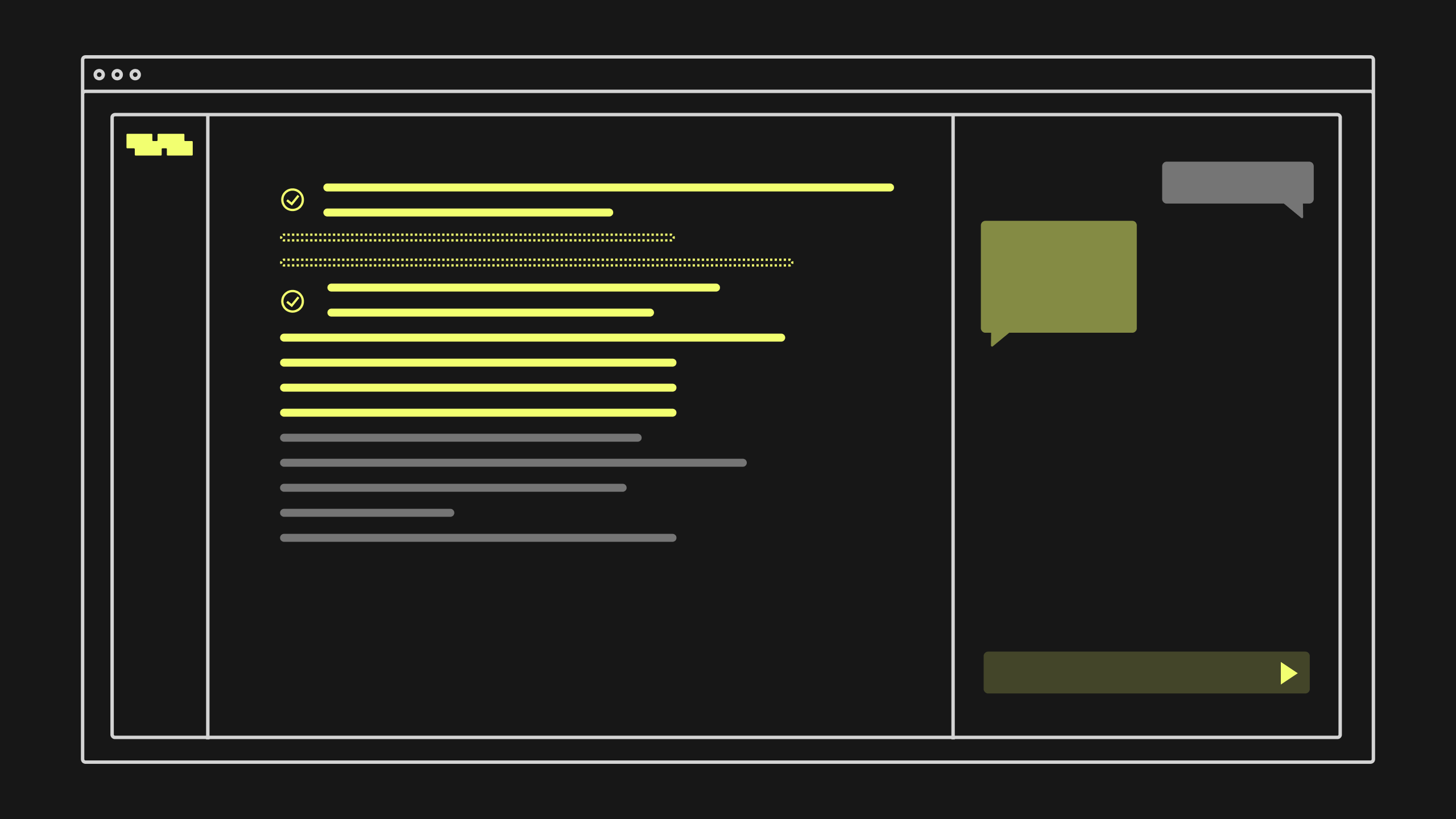
Key Takeaways
Business Process Orchestration is the coordination of all the different tasks, systems, and people involved in an end-to-end workflow to ensure they work together seamlessly.
- What it does: It’s the “conductor” that makes sure all automated and manual tasks happen in the right order to achieve a business outcome.
- The business impact: It provides the high-level logic and control needed to manage complex, multi-step business processes.
- The key difference from automation: It focuses on the entire process, not just individual tasks.
Efficiency and seamless operational flow are not mere aspirations today; they are non-negotiable demands. As organizations scale and digital ecosystems grow more complex, the challenge shifts from automating individual tasks to coordinating entire multi-faceted operations. This is precisely where Business Process Orchestration emerges as a pivotal strategy. Grasping the nuances of Business Process Orchestration is paramount for leaders trying to achieve true operational mastery and secure enduring strategic advantage.
This article aims to illuminate the profound concept of Business Process Orchestration. We will precisely define what Business Process Orchestration entails, clearly differentiate it from other automation concepts such as Business Process Management and straightforward process automation, and articulate its critical importance in streamlining complex, end-to-end business processes. By detailing its transformative benefits—including heightened efficiency, elevated user experiences, robust system consolidation, and enhanced strategic agility—and outlining its revolutionary applications across diverse business functions, this content delivers a comprehensive understanding. In essence, it serves as a foundational resource for enterprises seeking to adopt or optimize Business Process Orchestration for superior productivity and seamless operational management.
Decoding Business Process Orchestration
Business Process Orchestration refers to the coordinated, intelligent management of multiple automated and, at times, manual tasks, systems, and applications across an end-to-end business workflow to achieve a larger, often complex, strategic outcome. It’s about designing and actively managing the sequence, dependencies, and interconnections of disparate steps, ensuring they execute harmoniously to complete a comprehensive business process effectively. Think of it as conducting a grand symphony where every instrument (individual task or system) plays its part precisely on cue, contributing to a seamless, coherent performance (the completed business process). This meticulous coordination is central to what orchestration management achieves.
Business Process Orchestration vs. Automation vs. Business Process Management
The landscape of operational efficiency often sees terms like Automation, Business Process Management, and Orchestration used with varying degrees of precision. Understanding their distinct roles is vital.
- Automation: At its most fundamental, automation involves programming a system or machine to perform a specific, often repetitive, task independently. It replaces manual effort for a single activity. An example is a bot automatically extracting data from an email. Automation is about doing the task.
- Business Process Management (BPM): Business Process Management is a holistic, systematic discipline focused on continuously optimizing entire end-to-end business processes. It encompasses discovering, modeling, analyzing, improving, and monitoring processes. BPM is the strategic framework for process excellence.
- Business Process Orchestration: This is where the magic happens between the two. Business Process Orchestration is the intelligent coordination of various automated tasks, human activities, and disparate systems to complete a complex, multi-stage business process seamlessly. It ensures that the individual automated tasks (driven by automation) are executed in the correct sequence, with the right data, across the necessary systems, to achieve the broader process goal.
The difference between business process management and process orchestration is that BPM is the “what and why” of process optimization, while Business Process Orchestration is the “how” of coordinating disparate parts to achieve that optimization, especially in complex, automated workflows. Orchestration is the conductor that brings disparate automation elements into a coherent whole.
The Transformative Benefits of Business Process Orchestration
Implementing Business Process Orchestration delivers a compelling array of benefits that directly impact an organization’s bottom line and strategic posture. These advantages are more critical than ever in today’s interconnected enterprise.
- Unprecedented Operational Efficiency: By seamlessly coordinating all tasks and systems, Business Process Orchestration eliminates manual handoffs, delays, and bottlenecks. This drastically accelerates end-to-end process completion times and significantly boosts overall throughput.
- Superior Accuracy and Consistency: Orchestration ensures that every automated and manual step in a process is executed in the precise sequence, with validated data, every time. This minimizes human errors, leading to higher quality outputs and greater reliability in complex operations.
- Enhanced Strategic Agility: Organizations gain the ability to adapt swiftly to new market demands, regulatory changes, or unforeseen disruptions. With processes meticulously orchestrated, modifying a workflow becomes a matter of adjusting the orchestration layer, rather than individually reconfiguring numerous disparate automations.
- Improved User Experiences (Internal & External): Seamlessly flowing processes lead to faster service for customers and reduce frustrating manual work for employees. This elevates satisfaction across the board.
- Robust System Consolidation and Integration: Business Process Orchestration inherently requires deep integration across various enterprise systems (ERP, CRM, specialized applications). This drives system consolidation, reduces data silos, and fosters a more unified operational environment.
- Cost Optimization: Reduced manual labor, fewer errors, and significantly faster process cycles directly translate into substantial operational cost savings across the enterprise. This is a key driver for any automation initiative.
- Enhanced Visibility and Control: Orchestration management platforms provide real-time, end-to-end visibility into process status, performance metrics, and potential bottlenecks. This empowers leaders with precise control over critical operations and aids in strategic decision-making.
These advantages collectively showcase why Business Process Orchestration is a strategic imperative for any enterprise aiming for leadership.
What Orchestration Means in Software and Beyond
In the realm of software, orchestration refers to the automated configuration, coordination, and management of complex computer systems, applications, and services. It’s about integrating various IT tools and platforms to execute a multi-step IT process, such as deploying a new application, provisioning cloud resources, or managing intricate cybersecurity responses. For instance, in DevOps, orchestration ensures that build, test, and deployment stages of software development happen in a defined, automated sequence across different tools.
Beyond IT, orchestration implies controlling and sequencing actions, whether purely automated or human-driven, to complete a larger business process. It’s the “conductor” of the entire business process management lifecycle, ensuring each part plays its role perfectly. An example of workflow orchestration in a financial setting might involve the complete processing of a loan application, from initial customer submission, through automated data validation, credit checks via external APIs, routing to human underwriters, and final approval/disbursement. This requires careful orchestration management.
Business Process Orchestration: Real-World Applications
The strategic deployment of Business Process Orchestration delivers profound advantages for organizations across diverse functions. These orchestration capabilities are reshaping how work flows and are becoming central to competitive differentiation.
- Financial Services: Automating end-to-end accounts payable processes, from intelligent invoice capture and matching to multi-tiered approvals and payment initiation across ERP and banking systems. Also, orchestrating complex financial close activities, including data consolidation, reconciliation, and reporting.
- Human Resources: Streamlining employee onboarding, which involves coordinating tasks across HRIS, IT for system access, payroll setup, benefits enrollment, and scheduling initial training, ensuring a seamless experience.
- Supply Chain Management: Orchestrating complex order-to-cash cycles, encompassing order intake, credit checks, inventory allocation, fulfillment, shipping, invoicing, and payment collection across multiple integrated platforms.
- Customer Service: Beyond simple chatbots, Business Process Orchestration can manage complex service requests, routing inquiries based on customer history, triggering automated troubleshooting steps, and escalating to human agents with full context when needed.
- Manufacturing: Coordinating production scheduling, quality control inspections, and material flow from procurement to finished goods, optimizing the entire value chain.
These diverse use cases underscore the transformative impact of Business Process Orchestration on enterprise efficiency.
Intelligent Business Process Orchestration with Kognitos
While many platforms claim Business Process Orchestration, Kognitos offers a fundamentally distinct and more powerful approach, specifically engineered for the complexities of enterprise-grade workflows. Traditional orchestration tools often rely on rigid, programming-heavy configurations, struggling with unstructured data or unforeseen exceptions. Kognitos is fundamentally changing this paradigm, providing a safe AI automation platform uniquely positioned to deliver intelligent, AI-powered Business Process Orchestration solutions.
Kognitos delivers natural language process automation. This means businesses no longer need to build elaborate, separate orchestration layers to meticulously connect a dozen different bots or systems. Kognitos’s native AI skills uniquely reduce the need for extensive, high-level orchestration across disparate products by embedding intelligence directly into the automation itself.
Here’s how Kognitos fundamentally transforms Business Process Orchestration:
- Intelligence Embedded in Automation: Kognitos’s core AI reasoning engine understands the intent of a process described in natural language. This means a single Kognitos automation can perform multi-step actions, handle exceptions, and adapt to variations across multiple systems without needing a separate, rigid orchestration tool to dictate every next step. The automation itself is intelligent and inherently self-orchestrating at a fundamental level.
- Natural Language Simplifies Complexity: Instead of configuring complex orchestration management rules or coding intricate workflows, business users simply define desired outcomes in plain English. Kognitos’s AI interprets this, removing layers of technical complexity traditionally associated with orchestration.
- Dynamic Exception Handling: Traditional orchestration often breaks down when an unforeseen exception occurs. Kognitos’s AI agents are designed to intelligently detect, diagnose, and resolve unforeseen issues or to seamlessly integrate human-in-the-loop guidance. This significantly reduces the need for complex, predefined exception-handling logic within a separate orchestration layer, making BPM orchestration more robust.
- Reduced Product Sprawl and Integration Burden: By embedding comprehensive capabilities (like data extraction, decision-making, system interaction) within a single AI automation, Kognitos minimizes the need to acquire, integrate, and orchestrate multiple specialized tools. This simplifies the technology stack and reduces associated headaches.
- Empowering Business Users with Control: With Kognitos, the business user who truly understands the process can define the automation and inherently influence its “orchestration” simply by describing the desired workflow. This democratizes the ability to create sophisticated orchestration solutions, shifting control from IT to business, enhancing BPM orchestration.
Kognitos doesn’t replace all forms of orchestration (for truly massive enterprise-wide systems, some higher-level coordination is always present), but it profoundly reduces the burden and complexity of traditional orchestration. It delivers automation that is intelligent enough to self-manage many of the “orchestration” challenges that previously required separate, rigid tools. This allows organizations to achieve greater productivity, agility, and strategic control through a unified AI automation platform.
The Future of Business Process Orchestration
The trajectory for Business Process Orchestration points towards a future characterized by increased intelligence, adaptability, and inherent autonomy. We can anticipate:
- AI as the Master Orchestrator: AI will increasingly serve as the central cognitive engine, dynamically managing and optimizing complex processes, predicting potential issues, and intelligently rerouting tasks in real-time, leading to more resilient orchestration management.
- Proactive Problem Resolution: Business Process Orchestration solutions will leverage AI to anticipate and proactively resolve issues before they impact operations, moving from reactive fixes to predictive maintenance of workflows.
- Seamless Human-AI Collaboration: The focus will shift even further towards AI augmenting human capabilities, handling routine and cognitive tasks, thereby freeing human employees to concentrate on strategic decision-making, creative problem-solving, and cultivating crucial client relationships.
By embracing intelligent automation platforms like Kognitos, organizations can truly transform their approach to Business Process Orchestration, turning every operational challenge into an opportunity for growth and unparalleled efficiency.
Discover the Power of Kognitos
Our clients achieved:
- 97%reduction in manual labor cost
- 10xfaster speed to value
- 99%reduction in human error
The meaning of process orchestration refers to the coordinated, intelligent management of multiple automated and sometimes manual tasks, systems, and applications across an end-to-end business workflow to achieve a larger, often complex, strategic outcome. It’s about designing and actively managing the sequence, dependencies, and interconnections of disparate steps, ensuring they execute harmoniously to complete a comprehensive business process effectively.
The difference between business process management and process orchestration lies in their scope and focus. Business Process Management (BPM) is a holistic discipline for continuously optimizing all processes, encompassing design, modeling, execution, monitoring, and optimization of entire workflows. Process orchestration, conversely, is a specific capability within BPM, focusing on the technical coordination and integration of automated tasks and systems to ensure complex workflows run seamlessly. While BPM is the strategic oversight, orchestration is the tactical execution of complex process flows, often referred to as BPM orchestration.
The benefits of Business Process Orchestration are transformative: significantly increased operational efficiency, substantial reduction in manual errors and rework, accelerated end-to-end process completion times, improved scalability for handling fluctuating workloads, better resource utilization, enhanced compliance through consistent execution, and greater organizational agility to adapt to dynamic business needs. It allows for seamless flow and advanced automation of complex workflows.
In software, orchestration refers to the automated configuration, coordination, and management of complex computer systems, applications, and services to execute a multi-step IT process. This involves integrating various software tools and platforms to ensure that disparate automated components work together seamlessly to achieve a larger technical or business objective, such as deploying applications, provisioning cloud resources, or managing cybersecurity incident responses.
An example of workflow orchestration would be an end-to-end customer onboarding process. This involves coordinating automated tasks like CRM updates, identity verification through external APIs, background checks, system access provisioning, and sending welcome emails. It integrates various systems and human approval steps into a single, cohesive, and automatically managed workflow, showcasing the power of orchestration management.
The difference between orchestration and workflow is subtle but important. A ‘workflow’ defines the sequence of tasks required to achieve an outcome. ‘Orchestration’ is the active management and technical coordination of that workflow, especially when it involves multiple automated systems, applications, and often human decision points. Orchestration ensures that the workflow executes seamlessly across disparate components, handling dependencies and integrations to achieve the complete process.
The difference between process integration and process orchestration lies in scope and purpose. Process integration focuses on connecting disparate systems and applications to allow them to exchange data and communicate (e.g., an ERP talking to a CRM). Process orchestration builds on integration, actively managing and coordinating the sequential execution of tasks across those integrated systems, ensuring that a complex, end-to-end business process flows correctly and achieves its desired outcome. Integration is about connection; orchestration is about coordination and command.








